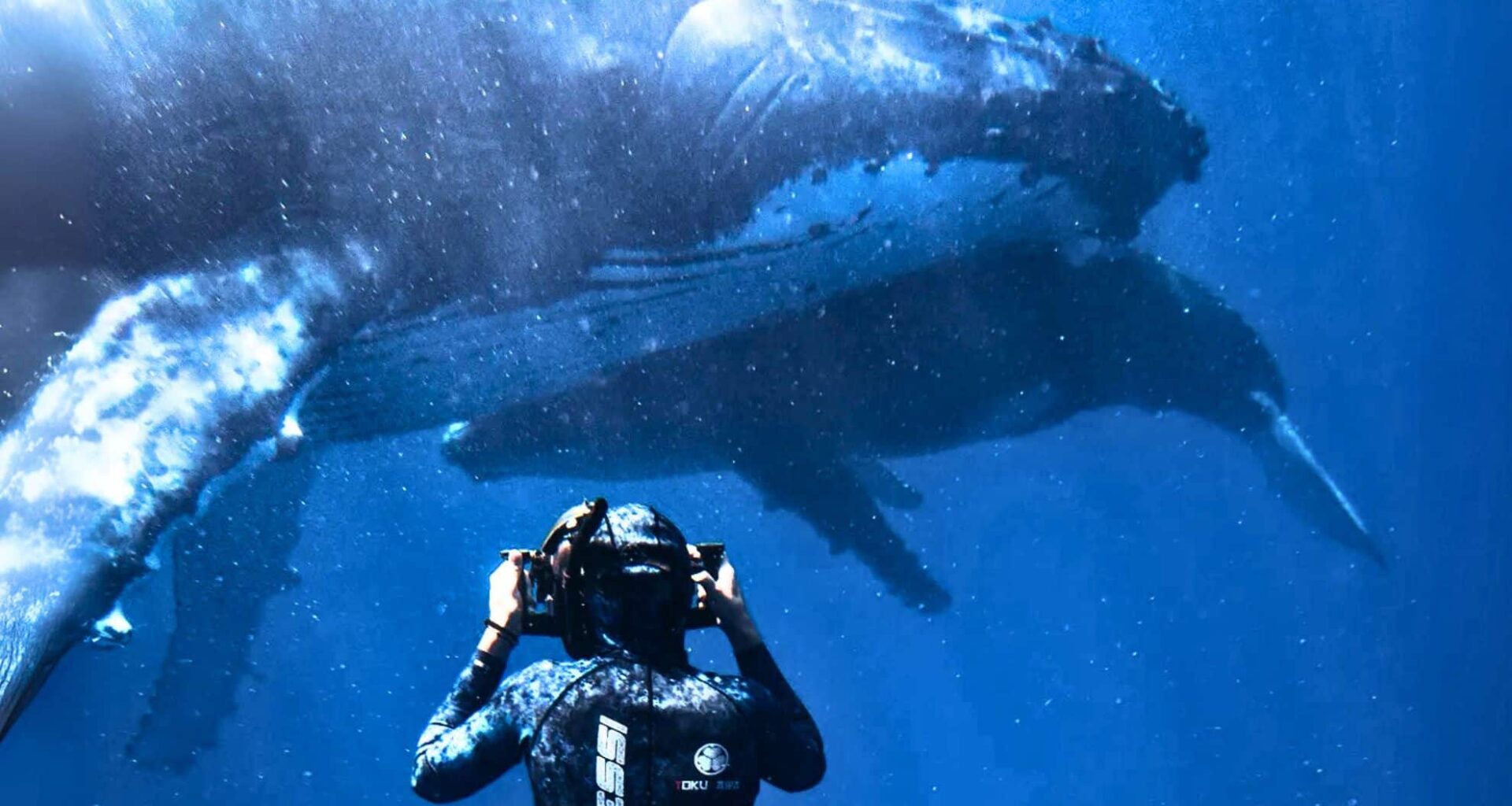Recently, underwater photographer Jono Allen shared a jaw-dropping account of an encounter that redefined what we know about whale behavior. While swimming in the ocean, Allen found himself in a delicate situation when a mother humpback whale approached him, seemingly sensing that he was in trouble. In a striking act of empathy, the whale tried to lift him out of the water to help him breathe. This once-in-a-lifetime interaction, shared with PEOPLE, captured a display of empathy that is as heartwarming as it is awe-inspiring.
A Life-Saving Gesture
Humpback whales are known for their size and power, but what Allen’s story highlights is their remarkable empathy. In this case, the whale approached Allen and attempted to lift him from the water. While this might sound like an isolated incident, it’s part of a larger pattern of compassionate behavior observed in whales, especially mothers.
Allen, fully aware of the risks, chose not to let the whale continue her actions for both their safety, but the encounter raises some profound questions: Do humpbacks have an inherent ability to understand the needs of other species? Can they recognize distress in humans?
This moment reflects a growing body of research suggesting that marine animals, including whales, may be far more emotionally aware than previously thought. While we’ve long known that animals are capable of empathy, the deep, intentional connection that this whale showed towards Allen suggests that their emotional intelligence is more complex than we imagined.

Humpbacks: Giants of the Ocean With a Gentle Touch
Humpback whales are anything but ordinary. These enormous creatures can grow up to 60 feet (18.29 m) in length and weigh as much as 40 tons. Despite their massive size, they are surprisingly agile and known for their complex social behaviors. Their songs—long, haunting melodies—are perhaps the most famous example of their intricate communication skills.
But what truly sets humpbacks apart isn’t just their size or ability to communicate through songs. It’s their behavior. Humpbacks are often observed displaying acts of kindness toward other creatures, from aiding injured members of their pods to even helping other species in distress.
Allen’s encounter is just one example of this empathy in action, but it underscores a broader truth: whales are more than just giants of the ocean—they are conscious, feeling creatures capable of forming deep connections with their environment.
The Science Behind Their Empathy
Studies have shown that whales, particularly humpbacks, exhibit behaviors that suggest a level of social intelligence and empathy. Researchers from institutions like the University of Queensland have found that humpback whales will sometimes engage in what’s known as altruistic behavior. This includes helping other whales during migration or even sharing food sources. This behavior isn’t just about survival; it’s about relationships within the species and beyond.

Scientists are still working to fully understand the mechanisms behind whale empathy. One theory is that their highly developed brains and social structures allow them to recognize the emotional states of others. For example, researchers have noted that when humpbacks are in distress, other members of the pod often rush to their aid, demonstrating an innate understanding of the need for help.
The Fascinating World of Humpback Behavior
In addition to their empathetic acts, humpback whales are known for their complex feeding strategies. Despite their enormous size, humpbacks feed primarily on krill and small fish, using an impressive technique known as bubble net feeding. They create a “net” of bubbles around their prey to trap and herd them into a tight group, making it easier to consume large quantities of food at once. This method not only showcases their intelligence but also highlights their capacity to work together as a group, further emphasizing their social nature.
Moreover, humpbacks are famous for their long migrations. Every year, these whales travel up to 10,000 miles, one of the longest migrations of any mammal. During the summer and fall, they head to cooler waters like Alaska to feed, and then, when winter arrives, they migrate to warmer tropical waters such as Hawaii to mate and give birth. This migration, driven by the availability of food and the need for a safe environment to reproduce, is just another example of the whales’ remarkable survival strategies.

